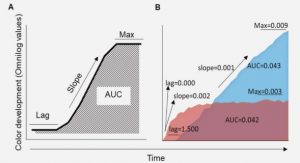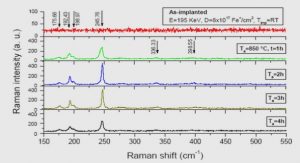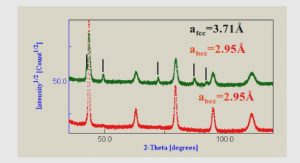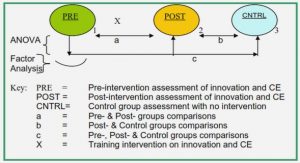Get Complete Project Material File(s) Now! »
Information sharing and processing model
A flaw identifiable from the polycentric model above is the absence of an information processing system. To threw more light on the complexity of coordination in a humanitarian crisis situation, Stephenson (2006, p. 45) notes that; …no single player in humanitarian aid scenarios, including the UNOCHA, can command either the affected national governments or proto governments (such as may exist in instances of civil war), the array of UN entities, or the many INGOs and NGOs operative in these situations to behave in specific ways‟. Emphasizing the importance of information sharing in the humanitarian sector, Huesemann (2006, p. 277) notes that ‗sharing information on their activities is one way in which agencies can save money and time, by avoiding duplication of efforts achieved elsewhere, and helping them to find partners with whom they can pool funds and expertise‘. As Rietjens et al (2007) point out; stakeholders will use different coordination mechanisms under complex emergencies. The four cited mechanisms are self contained tasks, vertical relations, slack resources and (vertical) information systems.
Research Approach
We conducted our study based on an inductive approach. As the core approaches in western research traditions (Kovacs & Spens, 2005), deduction and induction explore the relationship between theory and research in opposite directions. Specifically, the deductive approach can be viewed as revolving around the idea that collection and analysis of data is conducted in relation to the hypothesis which is deduced from theory and will be subject to empirical testing. In stark contrast to deductive approach which moves from the general to the specific, induction operates from the specific to the general (Adams, Khan, Raeside & White, 2007). Concretely, inductive method is depicted as a process in which theory is drawn from extensive research and empirical observations. Although inductive analysis was found to be the most suitable for this thesis, our study also involved deductive element since in practice the research methods can develop and change during the course of investigation with new theoretical ideas being found or as a result of data not fitting original assumptions (Bryman & Bell, 2007).
Interview
Business research interviews may take different forms encompassing personal interview, telephone interview and computer-assisted interview with the help of internet. Face-to-face interviews have been the focus of our research. By conducting personal interviews we were enabled to have control of the interviews and be more flexible since we could adjust our pre-determined questions based on the interviewees‘ answers as the interview proceeded. In this sense, the risk of information loss as in telephone interviews was reduced. Most importantly, by interviewing in person, a position of trust and closer rapport would be established, thereby minimizing the risk of being declined on some requests and facilitating the attainment of detailed insight into the topic of our interest. In this thesis, apart from the personal interviews we conducted with the Swedish Red Cross in Jönköping and Göteborg, email interviews were also carried out with MSF and Nordic Defense Force with several follow-up interviews being made by telephone. Granted, both telephone and email interviews have salient drawbacks in limiting an exploratory discuss in an open-ended research and adversely affecting the researcher‘s interpretation of the respondent‘s answers. They also promise certain advantages like cost and time saving, ‗ease of geographic coverage‘ (Adams et al., 2007, p. 149) which make them more suitable in circumstances where first contacts with respondents are established but further face-to-face interviews are not allowed, as in the case of MSF and the Nordic Force.
Interview Guide
The preparation of an interview guide is essential before conducting an interview. The basic idea behind interview guide is to provide a fairly structured list of questions to be asked or issues to be addressed (Bryman & Bell, 2007) which serves as a guideline for interviewing. The interview questions should not be too specific but formulated in a flexible manner to invoke the interviewees‘ expression of their views towards a certain issue and contextualize their answers (Bryman & Bell, 2007). A collection of questions formulated in an open format is an option for most researchers conducting semi-structured interviews. This preference can be explained by the advantages of open questions over closed ones. Concretely, open questions have the potential to elicit respondents‘ professional knowledge and unique understanding of a certain phenomenon or issue, which can hardly be obtained by an outsider.
Literature
In order to get an in-depth understanding about humanitarian logistics and the cooperation of actors in particular, we‘ve reviewed a large amount of literature in this area. In the view of Bryman & Bell (2007), studying existing literature is of overriding importance since it lays the cornerstone for analysts to illustrate their research questions and build their research design. Besides, the necessity for undertaking literature review can be justified by the possibility it provides to identify such issues as ‗what has been done already in this field, who holds what kind of perspectives, what remains unexplored‘, and so on (Adams et al., 2007). Research questions might be further refined and adjusted during the process of literature review (Bryman & Bell, 2007). As stated by Adams et al. (2007), literature review falls into three distinct categories, namely Evaluative Review, Exploratory Review and Instrumental Review. The first type of review mainly concerns the coverage of existing literature and its contribution in a specific area. Instrumental Review, on the other hand, is designed to provide information about the approach to conducting a research project without touching the concrete knowledge in a chosen field.
Table of Contents
- 1 Introduction
- 1.1 Background
- 1.2 Problem formulation
- 1.3 Purpose
- 1.4 Perspective
- 1.5 Research questions
- 1.6 Delimiting the scope of research
- 1.7 Disposition
- 2 Frame of reference
- 2.1 Theoretical and operational definitions
- 2.2 Overlapping supply chains
- 2.3 Establishing a civil-military framework
- 2.3.1 Civil-military cooperation
- 2.4 Disaster cycle
- 2.5 Organizational structure and coordination mechanisms
- 2.5.1 Humanitarian versus military models
- 2.5.2 Polycentric versus monocentric coordination model
- 5.3 Working models
- 2.5.4 Summary of theoretical framework
- 3 Methodology
- 3.1 Research Approach
- 3.2 Research Strategy
- 3.3 Primary Data Collection
- 3.3.1 Interview
- 3.3.2 Semi-structured interview
- 3.3.3 Interview Guide
- 3.3.4 Additional Considerations
- 3.4 Selection of Participants
- 3.4.1 Theoretical Sampling
- 3.4.2 Selection of NGO
- 3.4.3 Selection of Military
- 3.5 Secondary data collection
- 3.6 Literature
- 3.6.1 Additional considerations
- 3.7 Validity
- 4 Empirical study
- 4.1 Overview
- 4.2 Organizational field
- 4.3 Médecins Sans Frontières
- 4.3.1 Preparedness and response
- 4.3.2 Civil-civil, civil-military cooperation and arbitration
- 4.3.3 Organizational structure and funding
- 4.4 Red Cross Sweden
- 4.4.1 Civil-civil, civil-military cooperation and arbitration
- 4.4.2 Organizational structure and funding
- 4.5 Nordic Defense Force
- 4.5.1 Preparedness and response operations
- 4.5.2 Cooperation and Integrated Missions
- 4.5.3 Overlapping roles & conflict
- 4.5.4 Rules of engagement and arbitration
- 4.5.5 Coordination
- 4.5.6 Organizational structure and funding
- 5 Analysis
- 5.1 Preparedness and response strategies
- 5.2 Organizational structures and funding
- 5.3 Overlapping roles and conflict
- 5.4 Cooperation framework, knowledge sharing and trust
- 5.5 Civil-military coordination
- 6 Conclusions
- 7 Discussion & ideas for future research
- List of references
GET THE COMPLETE PROJECT
Overlapping humanitarian logistics roles and attaining a strategic fit in civil-military relations






